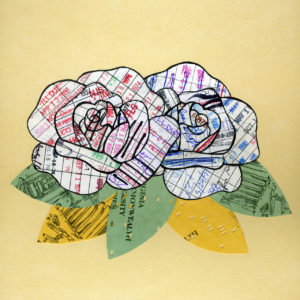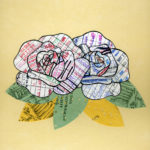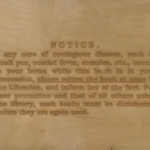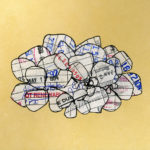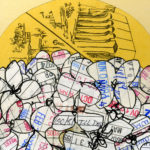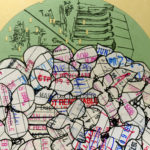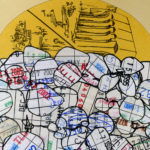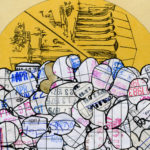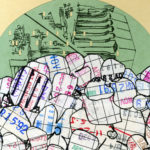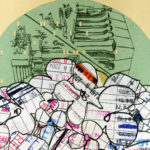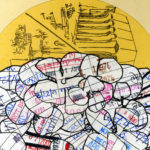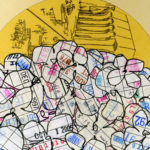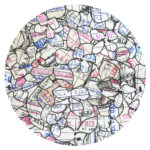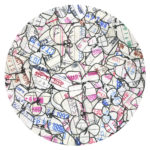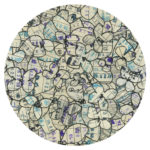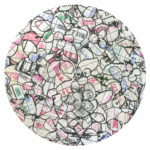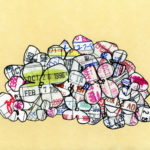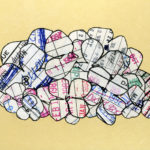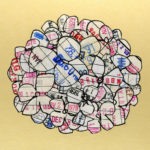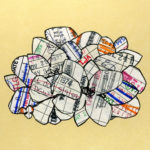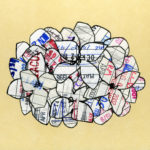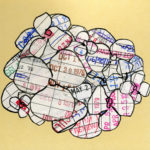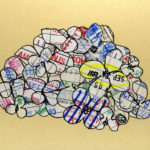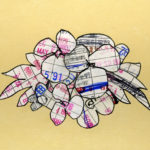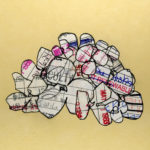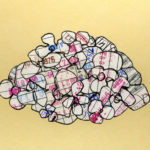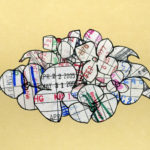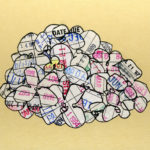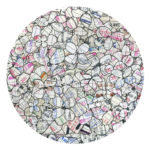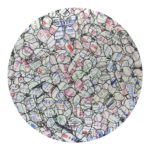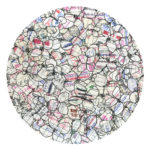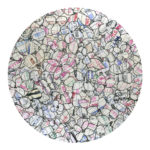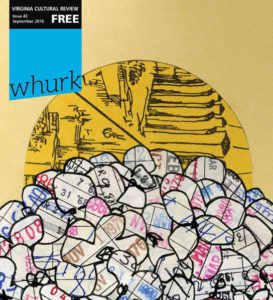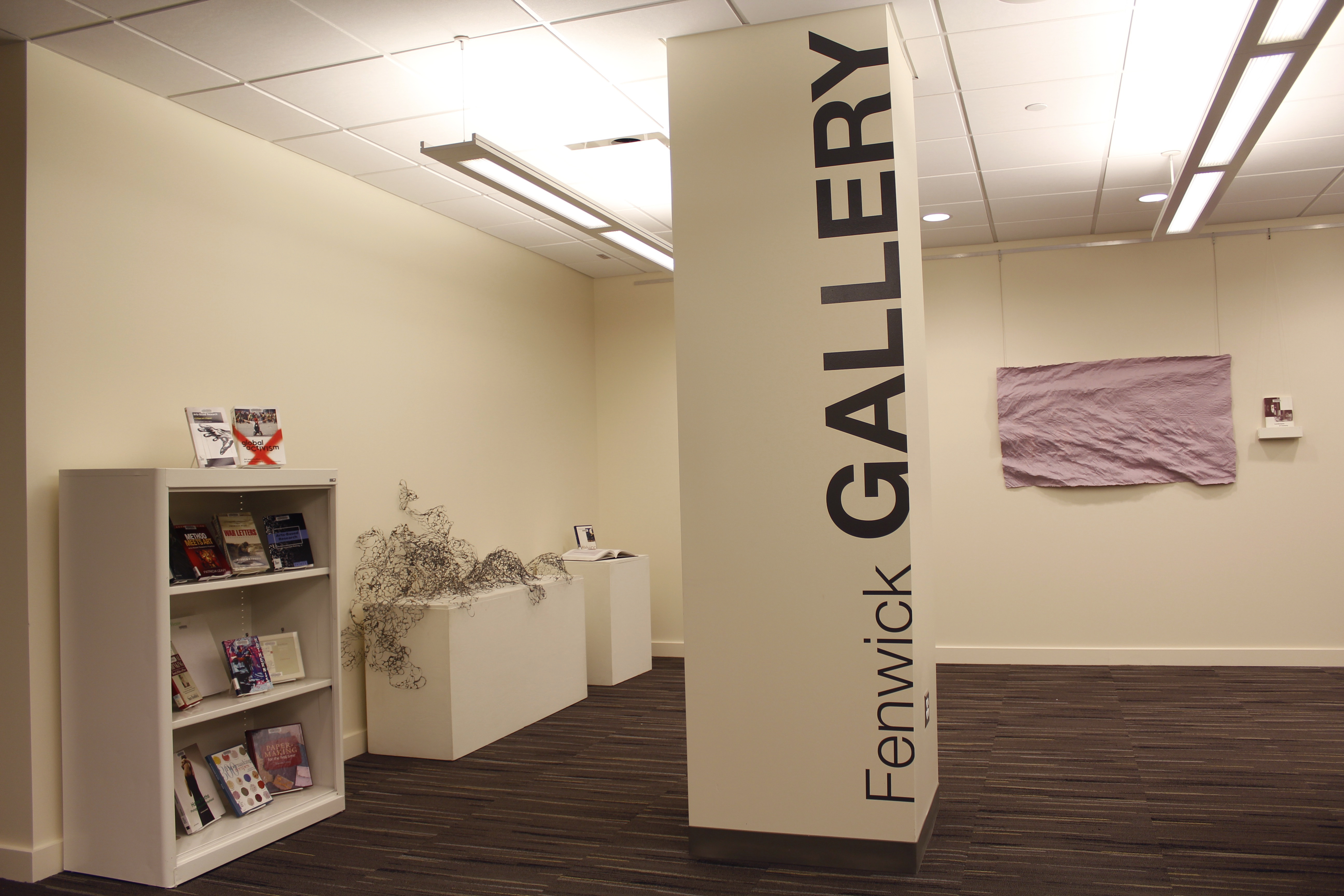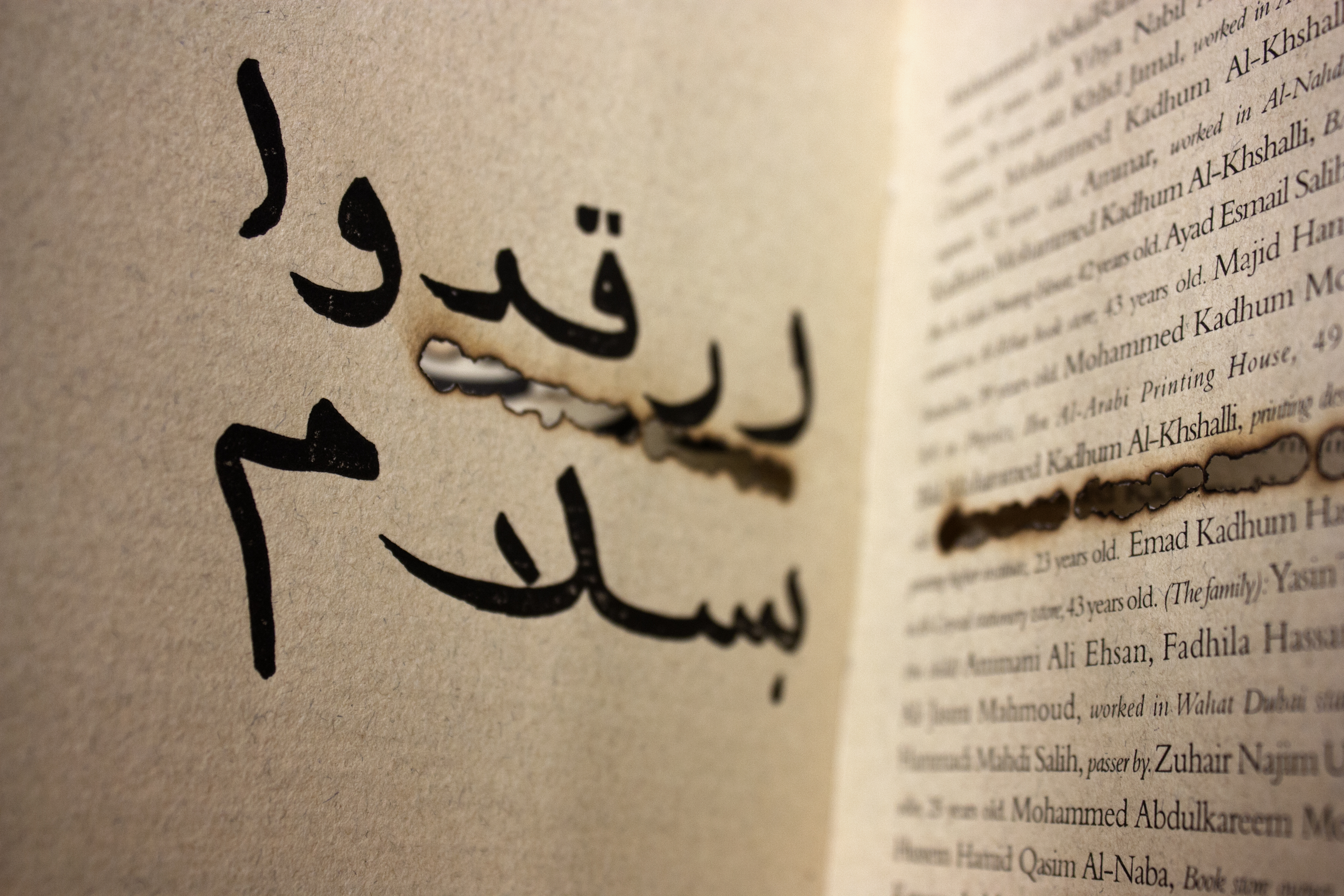Renewable
Jonathan Lee
July 22 – September 15, 2015
“Years are threats that libraries oppose.” Ander Monson
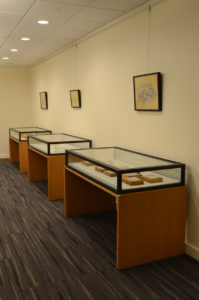 A long standing mission of the library is to gather and preserve information, artifacts, and data in order to make them available for future use. The contemporary library
A long standing mission of the library is to gather and preserve information, artifacts, and data in order to make them available for future use. The contemporary library
however, must be more than just a repository. Due to its unique place between the analog and digital world, it must be concerned with both the legacy of history and the pace of technology. It functions as both an information access point and a community center; a place for discovery, congregation, contemplation, interaction, opportunity, debate, escape, entertainment, and research. In order to accomplish this, many libraries have decreased their shelf space in favor of more open, usable space and new digital platforms. This has led many to discard books containing ephemera, marginalia, inscriptions, bookplates, and other unique pieces of historical data, many of which are associated with the history of the institution that collected them.
Virginia Commonwealth University recently opened an expanded Cabell Library that embraces this new model. In order to both make and construct new space, the library’s physical materials were systematically shifted, sorted, and purged. This provided me with 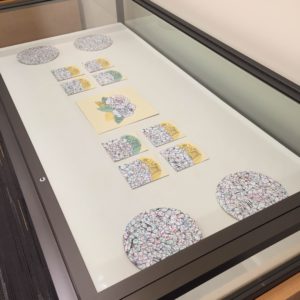 a wealth of discarded objects and records that seemed to have a unique presence and identity of their own. Due date slips and other forms of library ephemera are historical documents, showing our interactions with the library, its materials, and services over the course of decades. Each stamp or mark signifies an encounter, proof of a community engaging with information and culture. These hand marked materials are also mysterious. I’ve found myself drawn to the secret histories these items possess; where they’ve been, who used them, for what purpose. Every exchange had the potential to be transformative. I obsessively collected artifacts and ephemera from this renovation, without clear purpose, but with an interest in renewing their previous importance through exploring the library’s past, present, and future.
a wealth of discarded objects and records that seemed to have a unique presence and identity of their own. Due date slips and other forms of library ephemera are historical documents, showing our interactions with the library, its materials, and services over the course of decades. Each stamp or mark signifies an encounter, proof of a community engaging with information and culture. These hand marked materials are also mysterious. I’ve found myself drawn to the secret histories these items possess; where they’ve been, who used them, for what purpose. Every exchange had the potential to be transformative. I obsessively collected artifacts and ephemera from this renovation, without clear purpose, but with an interest in renewing their previous importance through exploring the library’s past, present, and future.
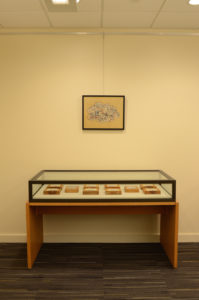 In 2015, I began making blind contour drawings with my non-dominate hand, focusing on quick gestures and movements while inviting chance to be a part of the work. The results were often organic and botanical; an outcome I did not expect. They too were mysterious, not unlike the due date slips with their overlapping stamps and marks. I eventually combined my new practice with the Cabell materials, making crude floral arrangements from due date slips using a combination of weak hand contour drawing and collage. This practice channels and processes the history, beauty, ugliness, and possibility of both the ephemera and ourselves. Deliberate and unconscious choices are made while interacting with the source material, creating works that are both highly personal and representative of our individual and collective experiences with books.
In 2015, I began making blind contour drawings with my non-dominate hand, focusing on quick gestures and movements while inviting chance to be a part of the work. The results were often organic and botanical; an outcome I did not expect. They too were mysterious, not unlike the due date slips with their overlapping stamps and marks. I eventually combined my new practice with the Cabell materials, making crude floral arrangements from due date slips using a combination of weak hand contour drawing and collage. This practice channels and processes the history, beauty, ugliness, and possibility of both the ephemera and ourselves. Deliberate and unconscious choices are made while interacting with the source material, creating works that are both highly personal and representative of our individual and collective experiences with books.
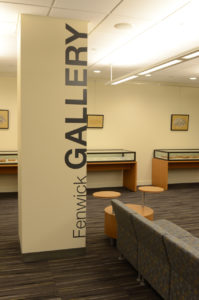 Libraries are a renewable resource. Every day, they provide us with access to countless possibilities. Past information is made new through the lens of our own experience during our moment in history. In each floral arrangement I’ve made, there are words, numbers, and marks that aren’t fully revealed as well as things we all recognize. This is a reflection of our own experiences looking through library shelves or searching for information. There are things we recognize and others we don’t; things we don’t notice or understand, as well as things we will come to understand. Flowers are flexible symbols, used to represent everything from love to loss, innocence to desire, life to death. They’re used to celebrate and commemorate vehicles of sentiments both fleeting and enduring. The blooms of spring signal rebirth and renewal, as do the flowers in my work. On the slips, each unique date marks an idea being planted. Each flower is the result of the imagination in bloom. Though I’m not directly invoking the language of flowers, I am encouraging the viewer to explore their symbolic associations outside any specific species.
Libraries are a renewable resource. Every day, they provide us with access to countless possibilities. Past information is made new through the lens of our own experience during our moment in history. In each floral arrangement I’ve made, there are words, numbers, and marks that aren’t fully revealed as well as things we all recognize. This is a reflection of our own experiences looking through library shelves or searching for information. There are things we recognize and others we don’t; things we don’t notice or understand, as well as things we will come to understand. Flowers are flexible symbols, used to represent everything from love to loss, innocence to desire, life to death. They’re used to celebrate and commemorate vehicles of sentiments both fleeting and enduring. The blooms of spring signal rebirth and renewal, as do the flowers in my work. On the slips, each unique date marks an idea being planted. Each flower is the result of the imagination in bloom. Though I’m not directly invoking the language of flowers, I am encouraging the viewer to explore their symbolic associations outside any specific species.
Through the metamorphosis of recognizable materials ad images, I’m attempting to connect the everyday with the extraordinary. By releasing them from 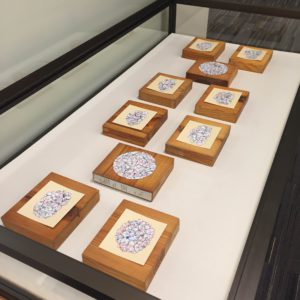 their intended context, I’m allowing them to be perceived in new ways while still maintaining their past associations and historical information. This work is about rebirth through intellectual encounters. By exploring the content, history, and physicality of these materials I hope to ignite a discussion about the different relationships we all have with information: how we access it, how we use it, how it informs our future. By altering the original form and purpose of this ephemera, I hope to show how information and culture can be rediscovered and renewed, specifically in a digital age where these documents may be no longer necessary.
their intended context, I’m allowing them to be perceived in new ways while still maintaining their past associations and historical information. This work is about rebirth through intellectual encounters. By exploring the content, history, and physicality of these materials I hope to ignite a discussion about the different relationships we all have with information: how we access it, how we use it, how it informs our future. By altering the original form and purpose of this ephemera, I hope to show how information and culture can be rediscovered and renewed, specifically in a digital age where these documents may be no longer necessary.
- Two Blooms
- Notice
- Election Year
- Renewable Horizon Series
- Renewable Horizon Series
- Renewable Horizon Series
- Renewable Horizon Series
- Renewable Horizon Series
- Renewable Horizon Series
- Renewable Horizon Series
- Renewable Horizon Series
- Renewable Horizon Series
- Renewable Circulation Series, 5″ Circles
- Renewable Circulation Series, 5″ Circles
- Renewable Circulation Series, 5″ Circles
- Renewable Circulation Series, 5″ Circles
- Renewable Arrangement Series
- Renewable Arrangement Series
- Renewable Arrangement Series
- Renewable Arrangement Series
- Renewable Arrangement Series
- Renewable Arrangement Series
- Renewable Arrangement Series
- Renewable Arrangement Series
- Renewable Arrangement Series
- Renewable Arrangement Series
- Renewable Arrangement Series
- Renewable Arrangement Series
- Renewable Circulation Series, 7.25″ Circles
- Renewable Circulation Series, 7.25″ Circles
- Renewable Circulation Series, 7.25″ Circles
- Renewable Circulation Series, 7.25″ Circles
Jonathan Lee, Fenwick Gallery’s Summer 2016 exhibiting artist, was featured on the cover of the Wurk Magazine’s September issue. The article promotes the Renewable, the gallery’s exhibition, as well as Lee’s Artist Talk held at Fenwick Library!
Check out Whurk’s online article, as well as images of Jonathan Lee’s work at http://whurk.org/43/cover

